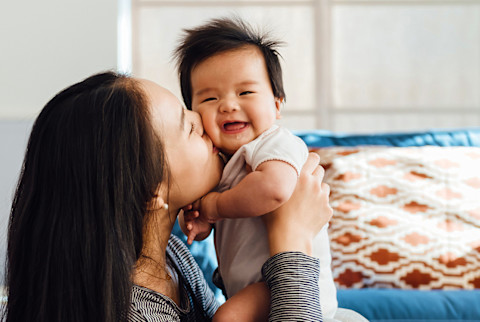Here's What The Science Says About Vaginal Seeding

About 15 years ago, I timidly approached the director of the maternal-feral medicine department at my hospital. I wanted to discuss a revolutionary concept: Transferring maternal vaginal smears onto the bodies of newborn babies delivered by Caesarean section. His response? I was completely shot down. He thought I was insane!
Fast-forward to today. Now, the idea of taking vaginal smears and inoculating babies with the maternal vaginal microbiome is discussed without so much as a raised eyebrow. What was thought of in the past as a crazy idea is now being seriously considered, even if the concept is relatively new and therefore has only a little data to support it.
Ever wondered how your microbiome first develops?
The first thing everyone should know is that the developing infant’s microbiome plays a critical role in that child’s health for their entire life. And the bacteria inhabiting the skin, mouth, gut, lungs, and elsewhere on the body come from the baby's exposures to microbes. Where does all this start? The beginnings of the microbiome actually emerge before birth, in utero. The microbiome greatly expands with the smearing of the mother’s vaginal microbiome onto the baby during the passage through the vagina during a natural birth, along with the exposures from the maternal rectum as the head emerges.

Breastfeeding for the next two years or longer then plays a huge role in the further development of the infant’s microbiome, which, by the age of about 2, is essentially complete. But what happens if the child is born by Caesarean section? What bacteria will colonize the baby’s skin and gut? Colonization can occur when infants encounter bacteria on their parents’ and nurses’ hands, hospital sheets, furniture, and counters.
Is there research on vaginal seeding?
Few studies on vaginal seeding—or smearing babies with vaginal secretions—exist, and therefore the medical establishment has elected not to recommend it until more data has been collected. Their fear is also that the vaginal secretions might lead to an infection in the baby. They say the risks outweigh the potential rewards. But while I fully understand the hesitation to make recommendations on a procedure involving a newborn, there is some research on the subject. For example, there is evidence that has linked babies born by Caesarean section to a higher rate of asthma, propensity to become overweight, and autoimmune conditions. Dr. Maria G. Dominguez-Bello at the New York School of Medicine has also spoken about the potential healthy benefits of vaginal seeding.
Should I consider vaginal seeding for my baby?
Ultimately, the choice of whether to go ahead with vaginal seeding is open to the baby’s parents. Personally, I hope that studies will soon be undertaken that firmly establish the benefits of vaginal seeding and lead to a recommendation that vaginal seeding be standard treatment for any babies born by C-section. As it is, it is an individual decision that must be thoughtfully considered. But it’s strange to think that my "crazy" idea from over a decade ago might soon become the standard of care!
